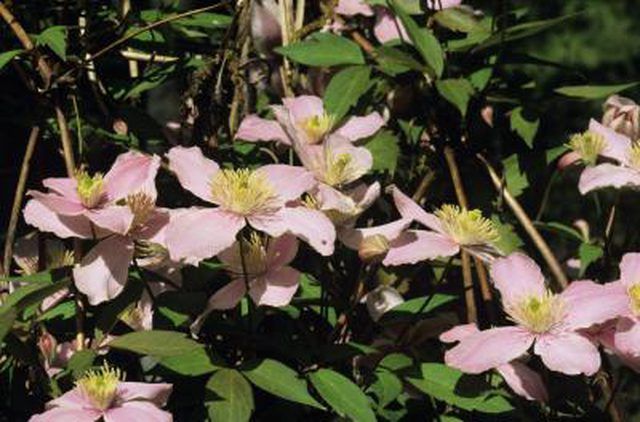Bulbs
Flower Basics
Flower Beds & Specialty Gardens
Flower Garden
Garden Furniture
Garden Gnomes
Garden Seeds
Garden Sheds
Garden Statues
Garden Tools & Supplies
Gardening Basics
Green & Organic
Groundcovers & Vines
Growing Annuals
Growing Basil
Growing Beans
Growing Berries
Growing Blueberries
Growing Cactus
Growing Corn
Growing Cotton
Growing Edibles
Growing Flowers
Growing Garlic
Growing Grapes
Growing Grass
Growing Herbs
Growing Jasmine
Growing Mint
Growing Mushrooms
Orchids
Growing Peanuts
Growing Perennials
Growing Plants
Growing Rosemary
Growing Roses
Growing Strawberries
Growing Sunflowers
Growing Thyme
Growing Tomatoes
Growing Tulips
Growing Vegetables
Herb Basics
Herb Garden
Indoor Growing
Landscaping Basics
Landscaping Patios
Landscaping Plants
Landscaping Shrubs
Landscaping Trees
Landscaping Walks & Pathways
Lawn Basics
Lawn Maintenance
Lawn Mowers
Lawn Ornaments
Lawn Planting
Lawn Tools
Outdoor Growing
Overall Landscape Planning
Pests, Weeds & Problems
Plant Basics
Rock Garden
Rose Garden
Shrubs
Soil
Specialty Gardens
Trees
Vegetable Garden
Yard Maintenance
Fertilizer for Clematis
Fertilizer for Clematis. Often called the Queen of Vines, clematis (Clematis spp.) varieties provide blooms from spring's earliest days until autumn's close. From delicate, alpine blossoms to dinner-plate-size hybrid blooms, the vines grace gardens from U.S. Department of Agriculture plant hardiness zones 3 through 9. Clematis aren't demanding...

Often called the Queen of Vines, clematis (Clematis spp.) varieties provide blooms from spring's earliest days until autumn's close. From delicate, alpine blossoms to dinner-plate-size hybrid blooms, the vines grace gardens from U.S. Department of Agriculture plant hardiness zones 3 through 9. Clematis aren't demanding vines, but heavy flowering needs adequate fuel. Proper nutrition through your vine's blooming season can help keep clematis flowers coming.
Making Nutrients Available
Before adding fertilizer to your clematis, ensure it can get to the nutrients you add. Soil pH controls the availability of nutrients. Most plants thrive with soil pH in the slightly acidic range, where the majority of nutrients stay in forms plants can absorb. Clematis are not exceptions. They flourish with slightly acidic soil pH in the range 6.2 to 6.8. Many commercial clematis growers grow their plants at the low end of that range or slightly lower. Unless your soil is extremely acidic, adding pH-raising amendments can tie up nutrients and make them unavailable to your vine. If in doubt, test your soil pH before you fertilize.
Fueling Early Growth
Allow spring soil to warm before you feed clematis. Roots can't actively process nutrients until soil temperatures reach around 55 degrees Fahrenheit. This corresponds to visible growth in the vine. When shoots put on 2 inches of new growth, start your season with a granular, low-nitrogen fertilizer such as 3-12-12 or 5-10-10. This promotes root establishment and oncoming blooms instead of vigorous growth. Many clematis aficionados use tomato- or rose-type fertilizers with a similar ratio. Broadcast 2 tablespoons at the base of each vine and water the area well so fertilizer begins to work. Wear gloves and safety eyewear, and avoid fertilizer contact with exposed skin. Wash thoroughly with soap and water after fertilizer applications.
Maximizing Seasonal Blooms
For early blooming clematis, apply a single follow-up application of 3-12-12 or similar fertilizer as summer begins. For repeat bloomers and summer- or fall-blooming vines, maintain regular feedings at four- to six-week intervals. Alternate the 3-12-12 fertilizer with a general, low-level, all-purpose fertilizer, such as 5-3-1, applied at the same rate through midsummer. This sustains and maximizes your clematis blooms through the growing season. One final application of 3-12-12 at summer's end turns the focus back to root development and overall health. Avoid additional fertilizing, so you don't stimulate leafy growth when your vine should be slowing down and preparing for winter.
Maintaining Vine Health
Proper culture helps your clematis and its roots stay healthy. Overwatering and underwatering inhibit root activity and limit the vine's ability to absorb fertilizers. Clematis prefer sunny locations with at least six hours of direct sun each day and fertile, well-drained, consistently moist soil. Check the soil by hand, and adjust watering to supplement natural rainfall. Keep soil moist -- never soggy -- and don't let roots dry out during the growing season. Keep the area clear of weeds, which compete for nutrients and moisture. A 2- to 3-inch layer of organic mulch protects roots and keeps them cool and moist. Keep the mulch about 3 inches away from the vine's stems.